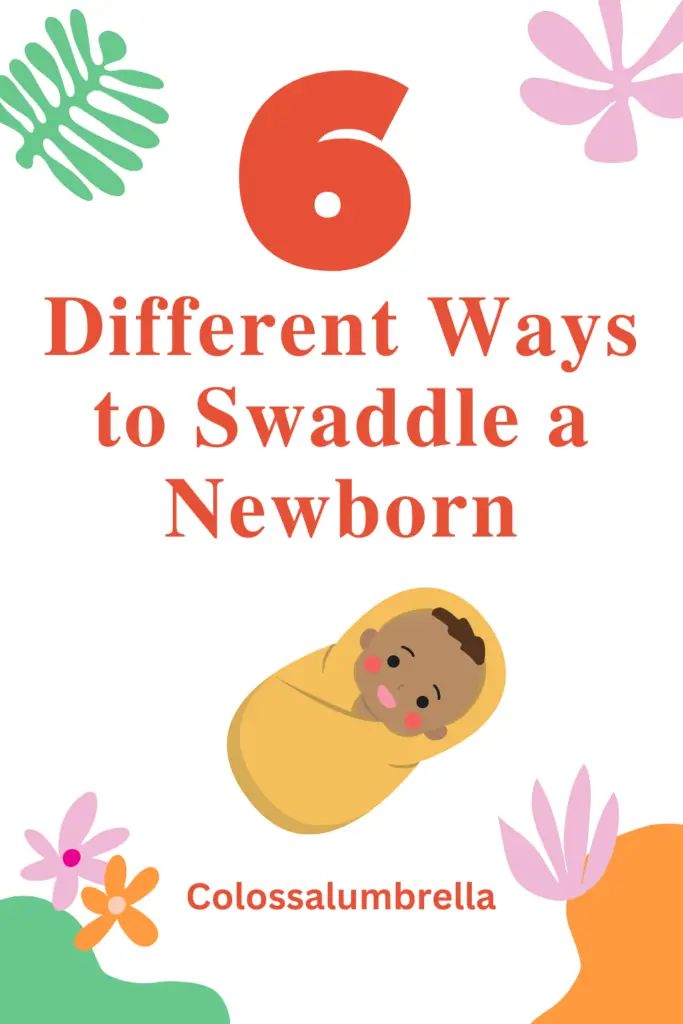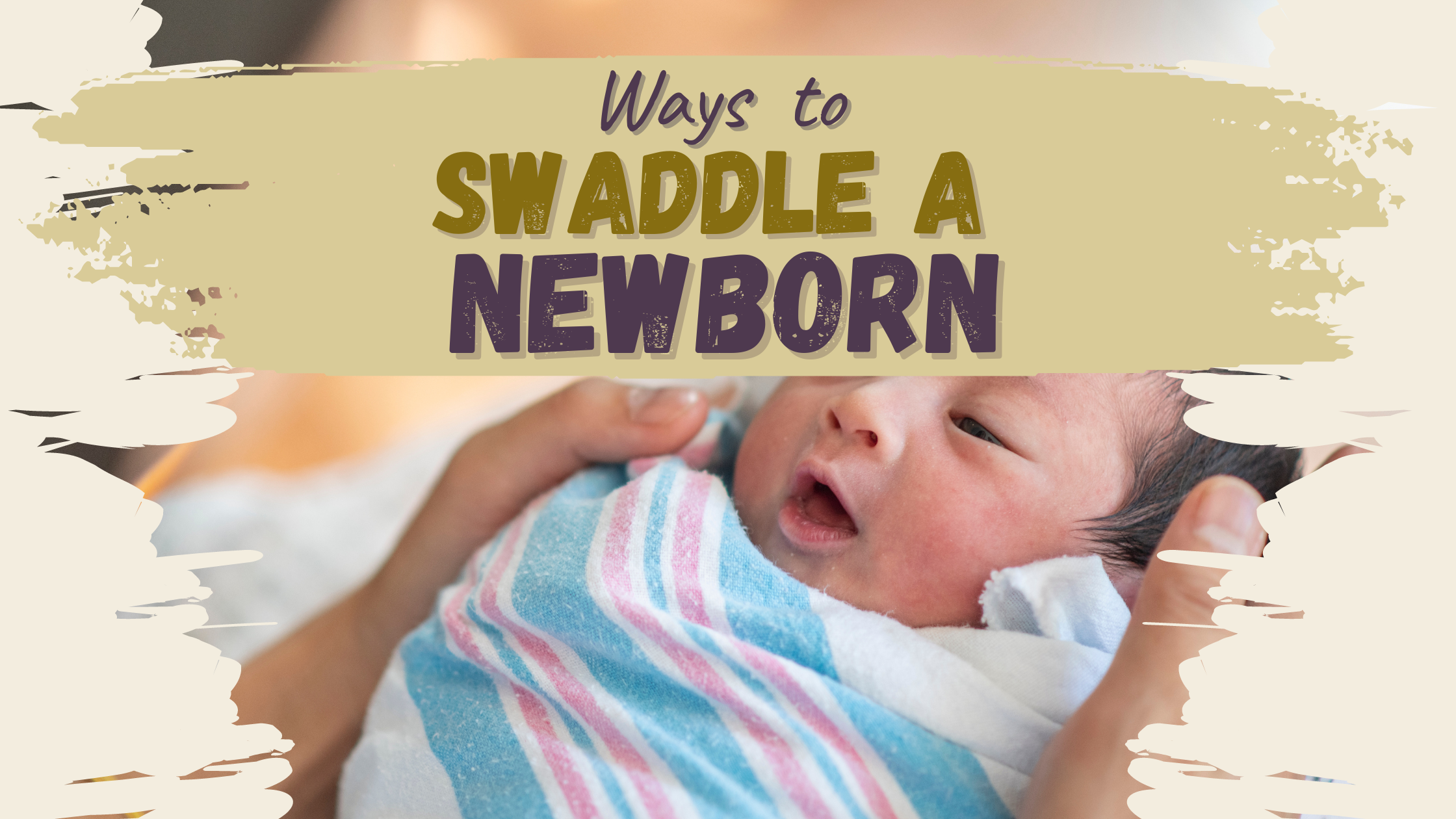Contents
If you’ve ever found yourself in a late-night swaddling frenzy, desperately trying to create the perfect baby burrito, then you’re in the right place. In this informative blog post, we’re about to uncover a treasure trove of different ways to swaddle a newborn. Prepare to unlock your inner swaddle maestro and become the Michelangelo of cozy wraps!
Swaddling, the art of wrapping a tiny human snugly in a soft blanket, has been trusted by generations of parents to soothe and comfort their little ones. But why settle for the same old swaddle when you can explore a world of swaddling possibilities?
We’ll dive into a multitude of creative approaches that will have you feeling like a swaddling rockstar. From classic folds that have withstood the test of time to innovative twists that will make your baby the envy of the nursery, we’ve got it all covered.
What is swaddling?
Swaddling, the ancient art of wrapping your precious bundle of joy with love and care, is here to save the day (and night!). Imagine creating a womb-like haven for your baby, soothing their startle reflex and ushering them into a world of serenity and security.
Through the centuries, parents have embraced this magical technique for good reason. Babies, with their delicate souls and adorable squirms, often find solace in the comforting embrace of a well-swaddled cocoon. The gentle tightness of the cloth not only calms their restless spirits but also transports them back to the cozy warmth of the womb.
Subscribe to my blog for Parenting tips that will make you feel like a pro, and get access to exclusive free Printables that will keep your little ones busy and happy!
Benefits of swaddling
Swaddling a newborn offers a plethora of benefits that can make both the baby’s and the parents’ lives a little easier. Let’s explore some of the remarkable advantages of swaddling:
- Soothes and Comforts: Swaddling recreates the snug environment of the womb, providing a sense of security and familiarity for the baby. The gentle pressure of the swaddle can soothe their startle reflex, helping them feel calmer and more relaxed.
- Promotes Better Sleep: By reducing spontaneous movements and preventing the baby’s arms from flailing, swaddling encourages longer and more restful sleep. It helps babies stay asleep by preventing their own startle reflex from waking them up, leading to more peaceful nights for both baby and parents.
- Prevents Scratching and Face Touching: Newborns have tiny, delicate nails that can inadvertently scratch their delicate skin. Swaddling keeps their hands close to their body, preventing them from scratching themselves or unintentionally touching their face.
- Regulates Body Temperature: Swaddling can help regulate a baby’s body temperature, keeping them warm and cozy without overheating. It provides an extra layer of insulation during colder months or in air-conditioned environments.
- Supports Safe Sleep Practices: Swaddling promotes safe sleep by reducing the risk of rolling onto their tummy, which is associated with an increased risk of sudden infant death syndrome (SIDS). When swaddled correctly, the baby is more likely to stay in the recommended back-sleeping position.
- Eases Colic and Discomfort: Swaddling can provide relief to babies suffering from colic or general discomfort. The gentle pressure of the swaddle can help soothe their abdominal region and alleviate symptoms of gas or indigestion.
- Enhances Parent-Baby Bonding: The act of swaddling is not only beneficial for the baby but also offers an opportunity for parents to connect with their little one. It creates a nurturing and comforting experience, fostering a stronger bond between parent and child.
- Facilitates Easier Diaper Changes: Certain swaddling techniques, such as the diamond swaddle or swaddle blankets with Velcro or zipper closures, allow for easy access to the baby’s diaper area without fully unwrapping them. This makes nighttime diaper changes more efficient and less disruptive to their sleep.
6 Different ways to Swaddle a newborn
Traditional Swaddle Techniques
Classic Swaddle
The classic swaddle is a tried and true method that has been used for generations. To swaddle your baby using this technique:
- Step 1: Lay a blanket on a flat surface in the shape of a diamond.
- Step 2: Fold down the top corner to create a straight edge.
- Step 3: Place your baby on the blanket with their head above the folded edge.
- Step 4: Tuck one side of the blanket snugly over your baby’s arm and chest.
- Step 5: Repeat on the other side, making sure the blanket is secure but not too tight.

Diamond Swaddle
The diamond swaddle technique is similar to the classic swaddle but offers some variations for parents who prefer alternatives. Follow these steps:
- Step 1: Begin with a diamond-shaped blanket.
- Step 2: Fold down the top corner to create a straight edge.
- Step 3: Place your baby on the blanket, positioning their neck just above the folded edge.
- Step 4: Fold one side of the blanket snugly over your baby’s arm and chest, tucking it underneath their body.
- Step 5: Repeat the folding and tucking process on the other side, creating a secure and comfortable swaddle.
Benefits and Considerations: The diamond swaddle allows for easy diaper changes without fully unswaddling your baby.
Modern Swaddle Techniques
Sleeved Swaddle
The sleeved swaddle incorporates sleeves to provide an additional layer of warmth and a feeling of security. Here’s how to do it:
- Step 1: Lay the swaddle blanket flat and place your baby’s body on top, aligning their shoulders with the top edge.
- Step 2: Fold one side of the swaddle blanket over your baby’s arm and secure it with the attached Velcro or snaps.
- Step 3: Repeat the process on the other side, ensuring a snug fit.
Advantages and Potential Drawbacks: Sleeved swaddles offer convenience and are ideal for wriggly babies, but they may be less customizable compared to other techniques.
Zippered Swaddle
Zippered swaddles provide a simple and secure way to wrap your baby snugly. Follow these steps:
- Step 1: Place your baby’s body in the center of the swaddle blanket.
- Step 2: Zip up the swaddle, starting from the bottom, until it reaches your baby’s chest.
- Step 3: Adjust the swaddle to ensure a comfortable and secure fit around your baby’s arms and chest.
- Features and Benefits: Zippered swaddles are quick and easy to use, making them ideal for busy parents.
Alternative Swaddle Methods
Muslin Wrap Swaddle
Muslin wraps provide a lightweight and breathable option for swaddling. Here’s how to use them:
- Step 1: Lay the muslin wrap flat, forming a diamond shape.
- Step 2: Place your baby on the wrap, aligning their shoulders with the top edge.
- Step 3: Fold one corner of the wrap over your baby’s arm and chest, tucking it underneath their body.
- Step 4: Repeat the folding process on the other side, ensuring a secure but not overly tight swaddle.
- Benefits and Customization Options: Muslin wrap swaddles are versatile and allow you to adjust the tightness based on your baby’s preference.
Swaddle Blanket with Velcro
Swaddle blankets with Velcro closures provide a convenient and customizable swaddling experience. Follow these steps:
- Step 1: Lay the swaddle blanket flat and place your baby’s body in the center, aligning their shoulders with the top edge.
- Step 2: Fold one side of the swaddle blanket over your baby’s arm and chest.
- Step 3: Secure the blanket by fastening the Velcro tabs.
- Step 4: Repeat the process on the other side, creating a snug and secure swaddle.
- Pros and Cons: Velcro swaddles offer simplicity and ease of use, but some babies may outgrow the Velcro closures quickly
Safety Guidelines for Swaddling
General Safety Precautions
- Never cover your baby’s face during swaddling.
- Avoid overdressing your baby and ensure they do not overheat.
- Place your swaddled baby on their back for sleep.
Common Mistakes to Avoid
- Wrapping the blanket too tight, restricting your baby’s movement or breathing.
- Using loose blankets that may pose a suffocation risk.
- Continuing to swaddle once your baby shows signs of rolling over.
Recognizing Signs of Discomfort or Overheating
- Pay attention to your baby’s cues, such as excessive sweating or restlessness, indicating they may be too warm.
- If your baby consistently resists being swaddled or seems uncomfortable, try a different technique.
Conclusion
swaddling is not just a practical technique; it’s an opportunity to create a serene and secure environment for your baby, promoting better sleep, soothing their tiny souls, and fostering a stronger bond between parent and child. Whether you choose the classic folds or opt for the trendiest swaddle styles, the goal remains the same—to provide comfort, warmth, and a touch of whimsy to your baby’s world.
As you embark on your swaddling adventures, don’t be afraid to unleash your creativity and personalize the experience. Experiment with different fabrics, patterns, and techniques that make you and your baby smile. Each swaddle becomes a canvas for your imagination, a work of art that wraps your little one in a cozy masterpiece.
I would stay connected and keep you updated with parenting tips, pregnancy guides, creative ideas, easy crafts, and Free Printables. Subscribe to Colossalumbrella to get new ideas delivered to your inbox. Follow me on Facebook, Pinterest, Twitter, and Instagram.
Disclaimer: The content of this blog is for informational purposes only and is not intended to be a substitute for professional medical advice, diagnosis, or treatment. Always seek the advice of your physician or other qualified healthcare providers with any questions you may have regarding a medical condition.
